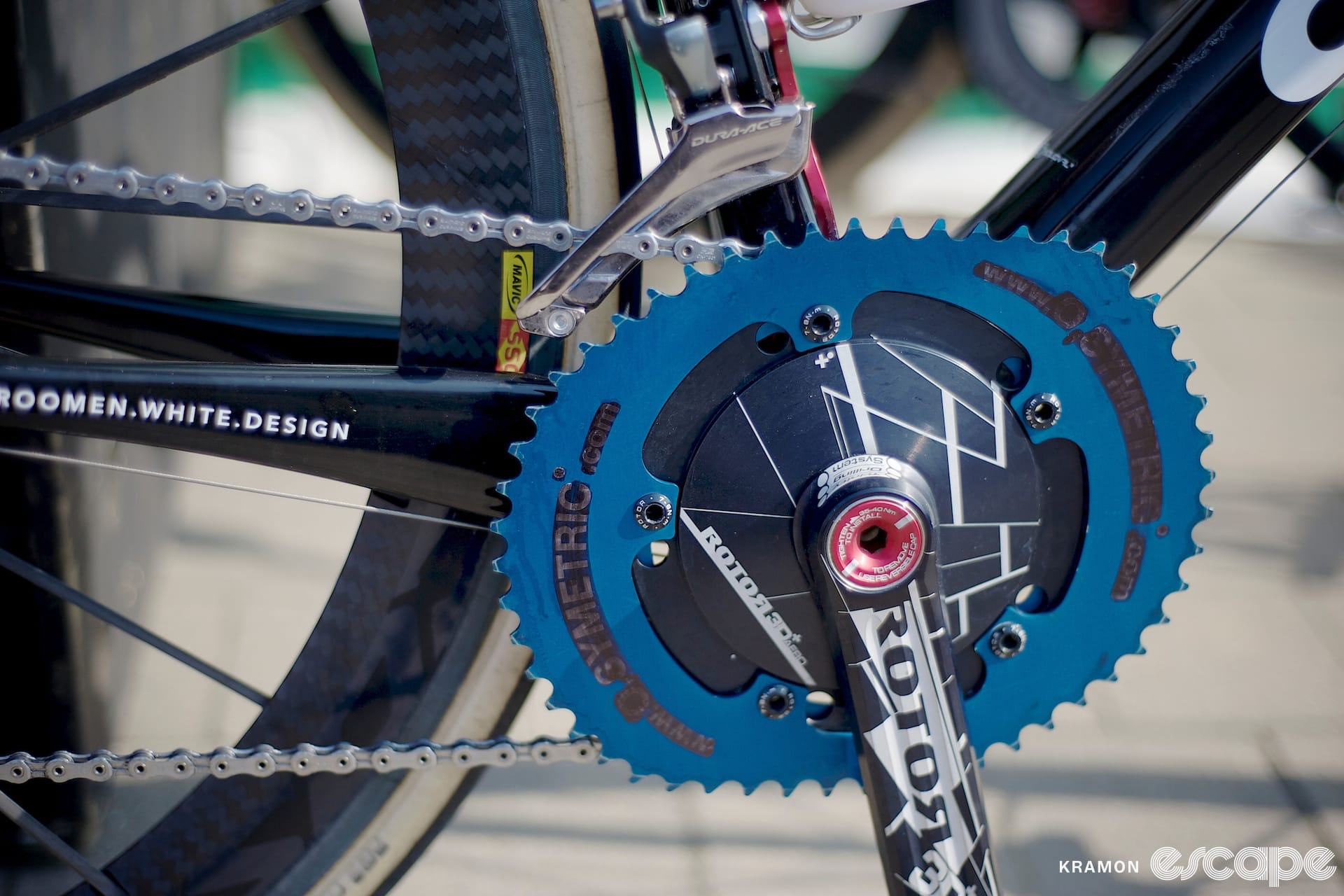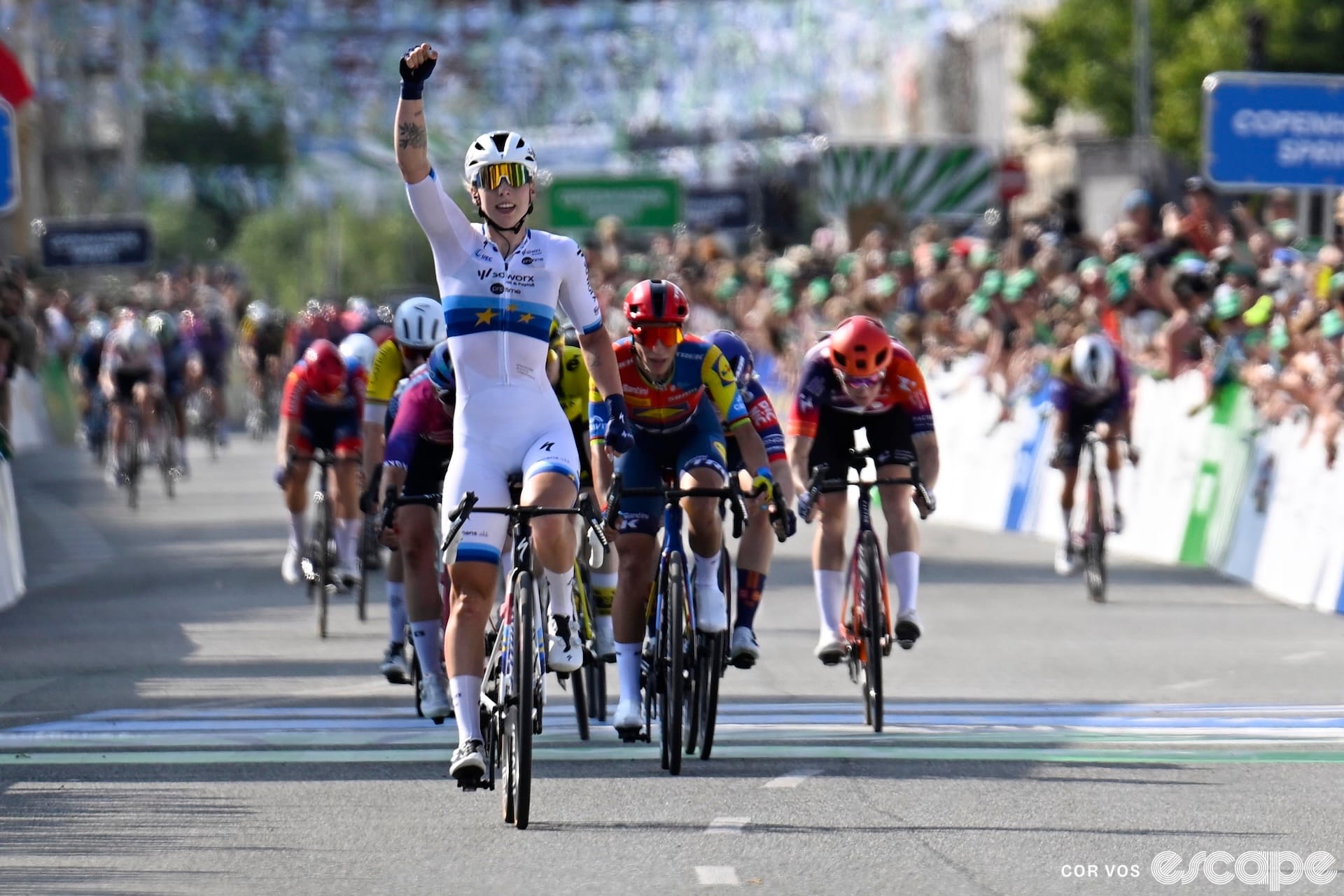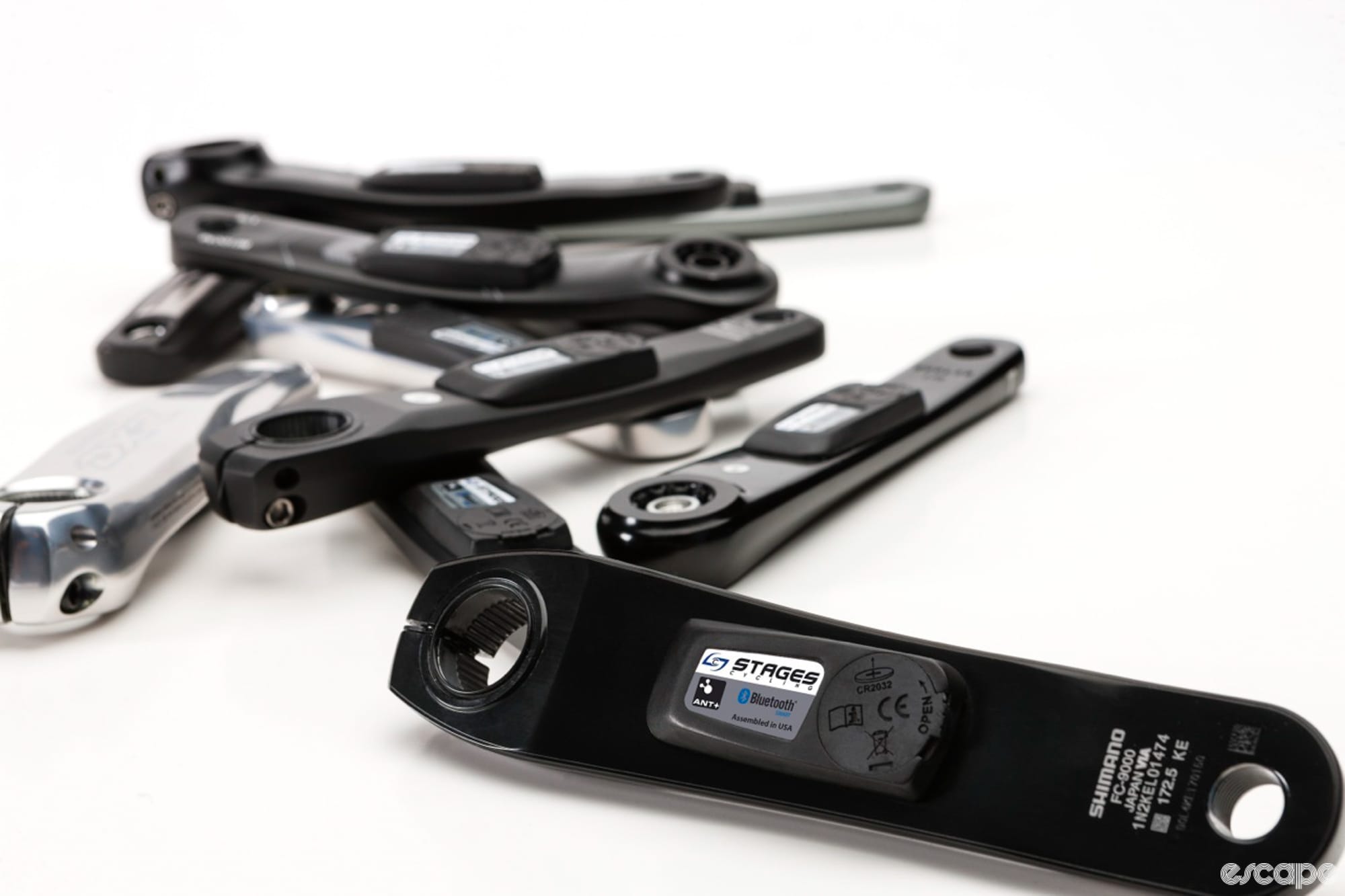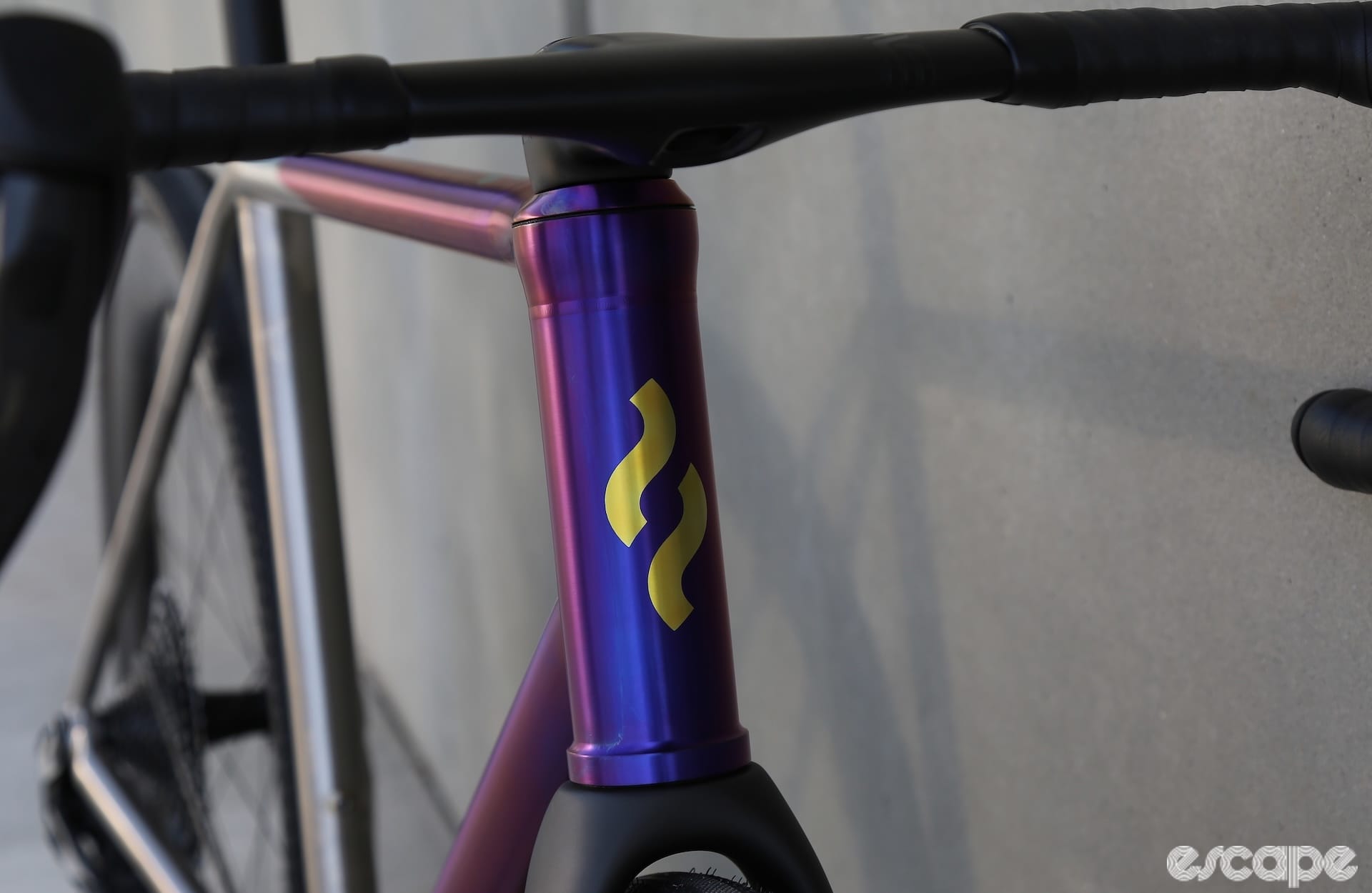Performance Process Newsletter is a fortnightly hub for everything new in the world of gains and the latest episode of the podcast by the same name: Sign up here.
Hello!
Welcome to the first Performance Process newsletter, Escape Collective’s performance and racing tech news digest. This newsletter is dedicated to making you a better, faster, more aerodynamic cyclist and will accompany new Performance Process podcast episode drops.
Think of it as your fortnightly hub for all that’s new in the world of performance cycling. New tech products, clothing, nutrition, training interventions, comparative testing, or quick hit reviews of smaller products: We'll cover it all. Performance Process is all about digging into the science, technology, and systems behind some of cycling's greatest performances, and this newsletter is a continuation of that.
The Performance Process podcast isn't going anywhere and you'll still get a new episode every two weeks, maybe even more frequently. In fact, so little has changed on that front, this week's episode is a continuation of our ongoing look at bike fitting.
This week we add some dirt to that conversation in a episode with Nathan Haas delving into bike fit for gravel. Nathan explains the principles guiding his bike fitting, his hopes to become an osteopath, and the current neurology blind spot in much of bike fitting. You'll find the sample audio of that members-only podcast at the end of this newsletter.
In fact, the only thing that's really changed is what follows from here on, which could be described as many things, but lets go with ... a nerdy database of all that's new in the world of optimisation.
Sign up here to get future editions of this newsletter and others from the Escape Collective network straight into your email inbox.
Weekly "gainz"
⛑️ Next up in the review pipeline are my own deep dive into the Kask Elemento, a helmet promising the seemingly impossible duo of both superior aerodynamics and thermal-comfort, and a closer look at the new Gabba R as Castelli sets about disrupting the race rainwear segment all over again with another fix most of us didn't know we needed.
😬 The Journal of Wind Engineering and Industrial Aerodynamics has published an update from Bert Blocken to his original study on the aero influence of a following car on a cyclist's drag in which he calls for "the UCI to strictly enforce the distance of 25 m" and limit following vehicles in time trials to carry a maximum of two bikes which are oriented in the riding direction and placed at the two outer edges of the roof ... or, just a suggestion, we could just avoid more rules that will never be enforced designed to govern a marginal gain available to every rider and team regardless of standing or budget.
🏔️ Reserve has a new 42|49 TA (turbulent aero) wheel set featuring a slightly confusing 40 and 44 mm rim depths, 25.4 & 24.8 mm-wide inner widths paired to 34.4 and 32.1 mm external rim widths, "optimised for 28-35 mm tyres, with "mini-hooks," and 24 spokes front and rear. Claimed weight - 1,341 grams with DT Swiss 180 hubs. Priced at US$2,500, lifetime warranty and a "no-fault crash replacement."
🤓 Sticking with science ... a new study suggests arm trips, as seen on most skinsuits these days, can reduce drag by 7%. What's perhaps more interesting though is that the researchers used Particle Image Velocimetry (PIV) in their research. PIV is an optical method of flow visualisation using laser and particles added into the flow. While far from new its use in cycling is, to the best of our knowledge, limited to some testing done at TU Delft with a Team Sunweb-era Tom Dumoulin manequin as far back as 2016. Is PIV the next aero frontier in cycling?
🚲 The wild V-IZU TCM-2 track bike Japan will use in the Paris Olympics was officially unveiled this week with wide forks and stays ala the Hope HB-T, turning vanes, integrated seat post, left-hand side drivetrain à la the 2016 Felt TA/FRD, and a definitely-not-UCI-commercialisation-rule-workaround price tag of just £101,000! Spoiler alert: The price is to deter any potential customers. Sssssshhhhhhh!
🚀 Wattshop has unveiled its Minimoi Mk2 TT Extension Poles, a lower-priced, 22.2 mm mount-compatible TT extension based on its Anemoi extension system. Notable among the updates are the new spacers supplied with the extensions designed to hide the round section and give that Anemoi-esque aero profile.
🍷 New SRAM Red is official, and Dave Rome has all the deep dive details. We've asked SRAM for details of any updates to the TT/Tri offering, but with no reply so far it seems there are none. With full backward compatibility to older 12-speed AXS systems, however, you can be certain the existing eTap AXS Tri levers will play nicely with the new derailleurs, though.
🍺 Pogačar was inside a new MET TT helmet during the Giro d'Italia TT. We assume this is a new Drone and features a sharper transition from side to tail, and a much more pointed tail replacing the wide exhaust at the rear of the existing MET Drone, while the front also appears to be slightly re-profiled with less detail around the vents and more angular transitions through the centre and on the helmet shell shoulders above the MET text.
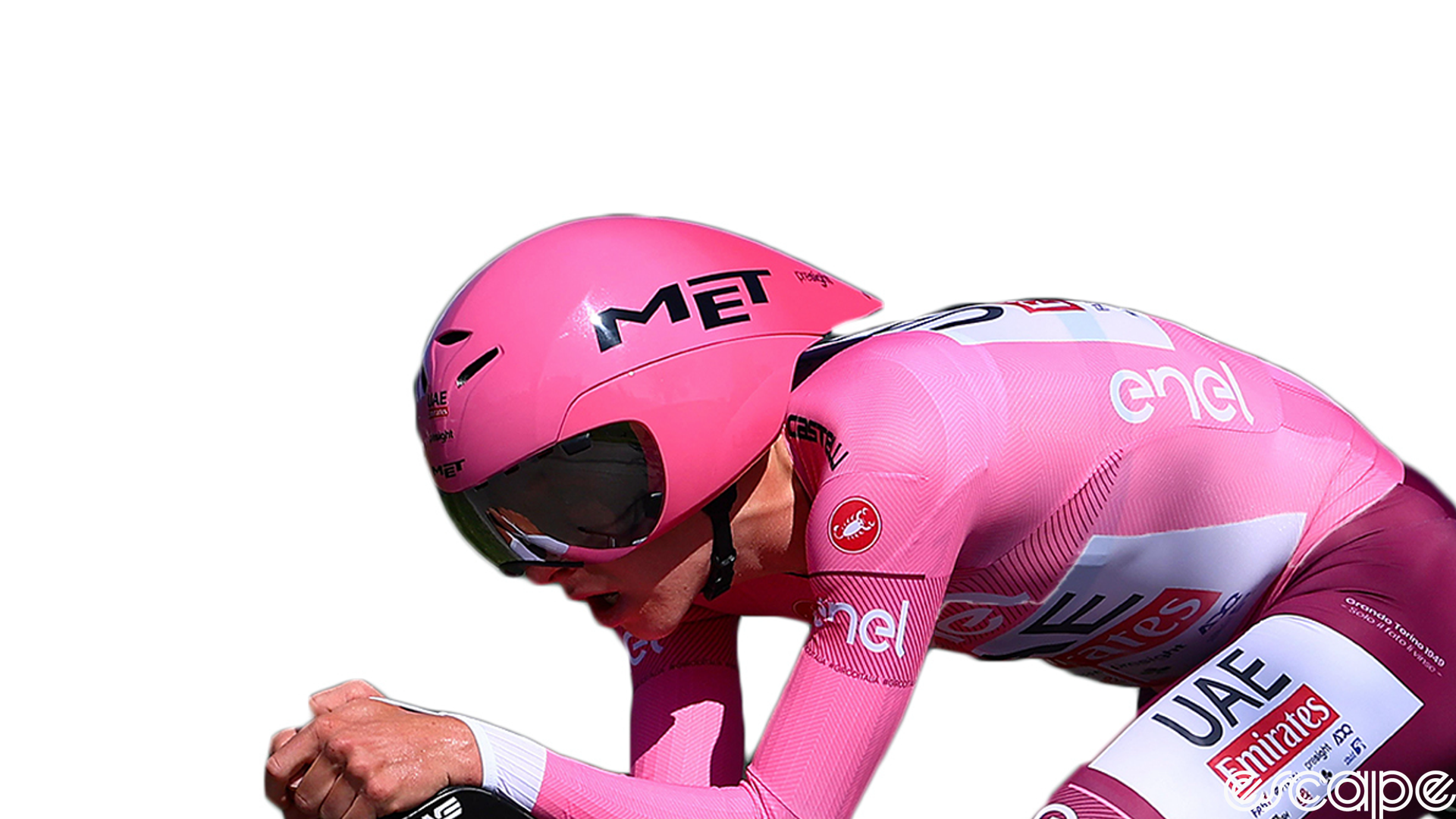
👑 Rudy Project has officially unveiled its new Wingdream TT helmet ... or the Wingdings if your name is Fretz or Lappartient. TT helmet aerodynamics are notoriously rider-dependent so we'll not regurgitate Rudy's wattage or time saving claims here.
👽 In the interests of ensuring all the ludicrous new TT helmets receive equal attention, we should also note the new Limar Alien TT helmet is now officially available, wild, and surely named with Limar's tongues stuck firmly in their cheeks. Interestingly, Limar is claiming the same wattage saving that shall not be named as Rudy Project did.
📱 Strava will roll out several new features in the coming months including night heat maps as part of its "build for her, build for many" initiative, weekly heat maps, dark mode, a plan to use AI to identify less-than-legit leaderboard times, and a family plan subscription option. Ray at DC Rainmaker takes a closer look.
🛞 Tyre wars
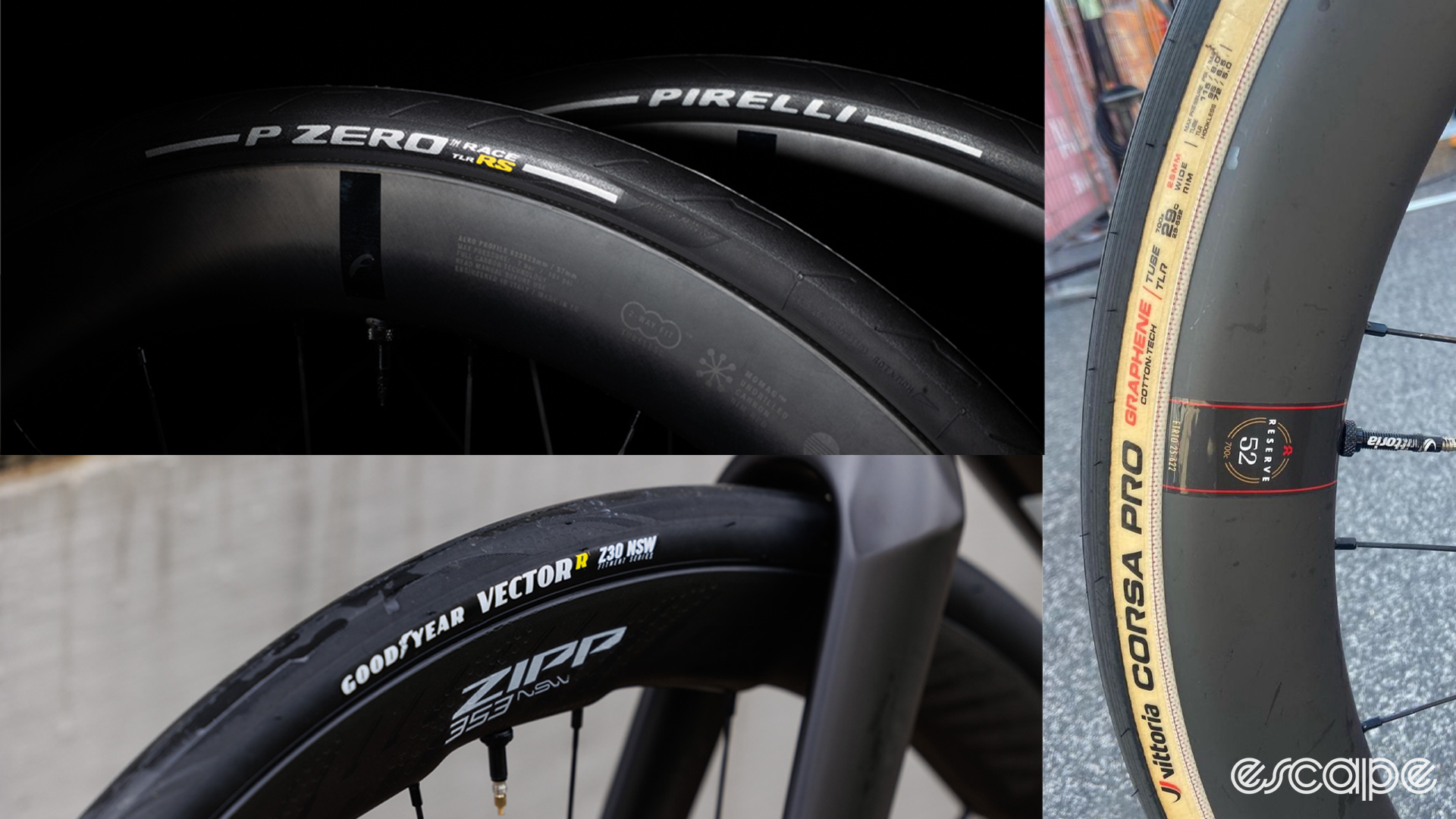
We'll kick off each newsletter with some news, and what's more nerdy than a dose of good old-fashioned F1-esque tyre war news?
Pirelli has officially unveiled its new P-Zero Race TLR RS, challenging Continental on both tyre name length and claimed performance. Production is moved to Italy near Pirelli HQ in Milan and the result is a claimed 16% reduction in rolling resistance and an 8% weight reduction (average results across all four sizes compared to P-Zero Race) .
The new tyre also features an updated compound and a new bead design, although still made with Kevlar, for tubeless straight side rim (hookless) compatibility (on the 30 mm and 32 mm sizes only).
The P-Zero Race TLR RS is available in 26-622, 28-622, 30-622, and 32-622, but sadly not with F1-esque red for soft or yellow medium hot patches, and priced at £85 / US$100 / AU$145 / €90. Those prices are similar to what you'll expect to pay for other top performance tyres these days, but .... dam tyres have got expensive, which reminds me, I've found two rear wheel tyre tears this week already 😔
Goodyear are also in on the new tyre game this week, with their new Vector R Fitment Series, a new range Dave Rome has covered in greater detail. We've previously discussed wheel specific tyres on the Geek Warning podcast, it seems this is another step in that direction. Will it make for faster systems? We've a pair of tyres on the way and a podcast in the works to find out.
Vittoria - Finally, in more tyre news, Olav Kooij won stage 9 of the Giro on a prototype 29 mm Corsa Pro. Vittoria told Escape Collective: "Technically, it is an actual 29 mm on a 25 mm rim, optimised in terms of casing shape and tread width to improve puncture resistance and cornering safety when using 24-25 mm rims, while maximising the aerodynamic benefit on such wide rims" in response to a request for more information on the new tyre.
I might have already typed something like ... "If I was to guess, I might conclude this new tyre follows the recent reminder from the UCI that it will be enforcing ISO 5775-1-2023 tyre and rim width combinations which specifically state the minimum tyre width permitted on 25 mm internal rims (ala the rim this tyre is mounted to) is .... you guessed it .... 29 mm," before Vittoria's response came in.
Tyre wars are so early-2000s F1, though, and if my inbox is to be believed, 2024 is the year of the saddle wars.
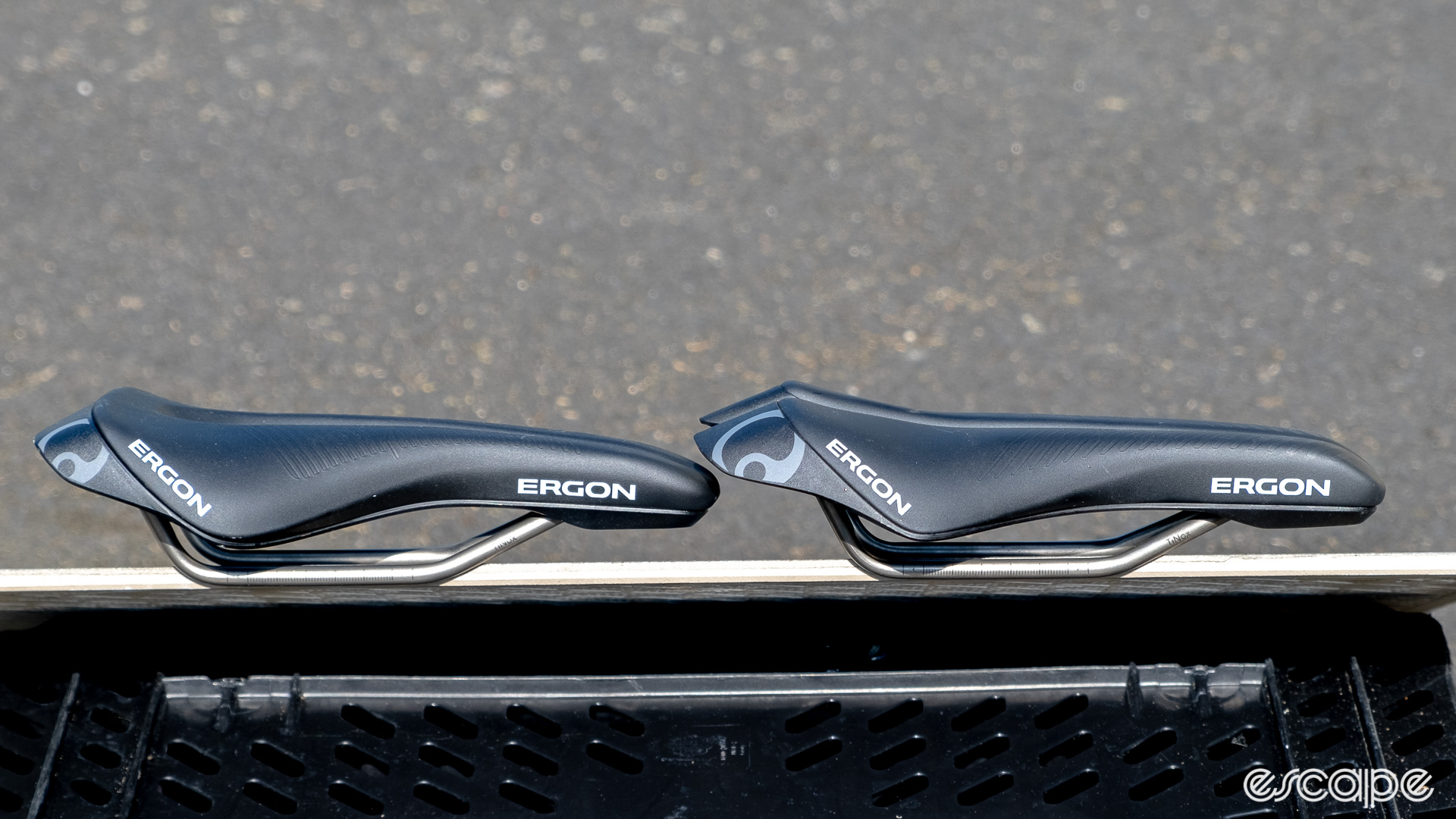
Ergon this week unveiled it's new SR Tri Series saddle range featuring three new tri/TT saddles: one for those who adopt a mid-sitting position with a more upright pelvis (left, above), one for riders who prefer a more forward-sitting position with a forward tilted pelvis (right, above), and one specifically for women. We have both the front and mid-type saddles in for review.
We've run the simulations - Feed me
This section is devoted to a review, mini-comparative testing, some other form of feedback or data we have to share. The topics will change, the idea remains the same: Provide an insight into something that might make you faster or aid your performance in some way. This week I share my findings on two new gels both offering 50 grams of carbs per gel.
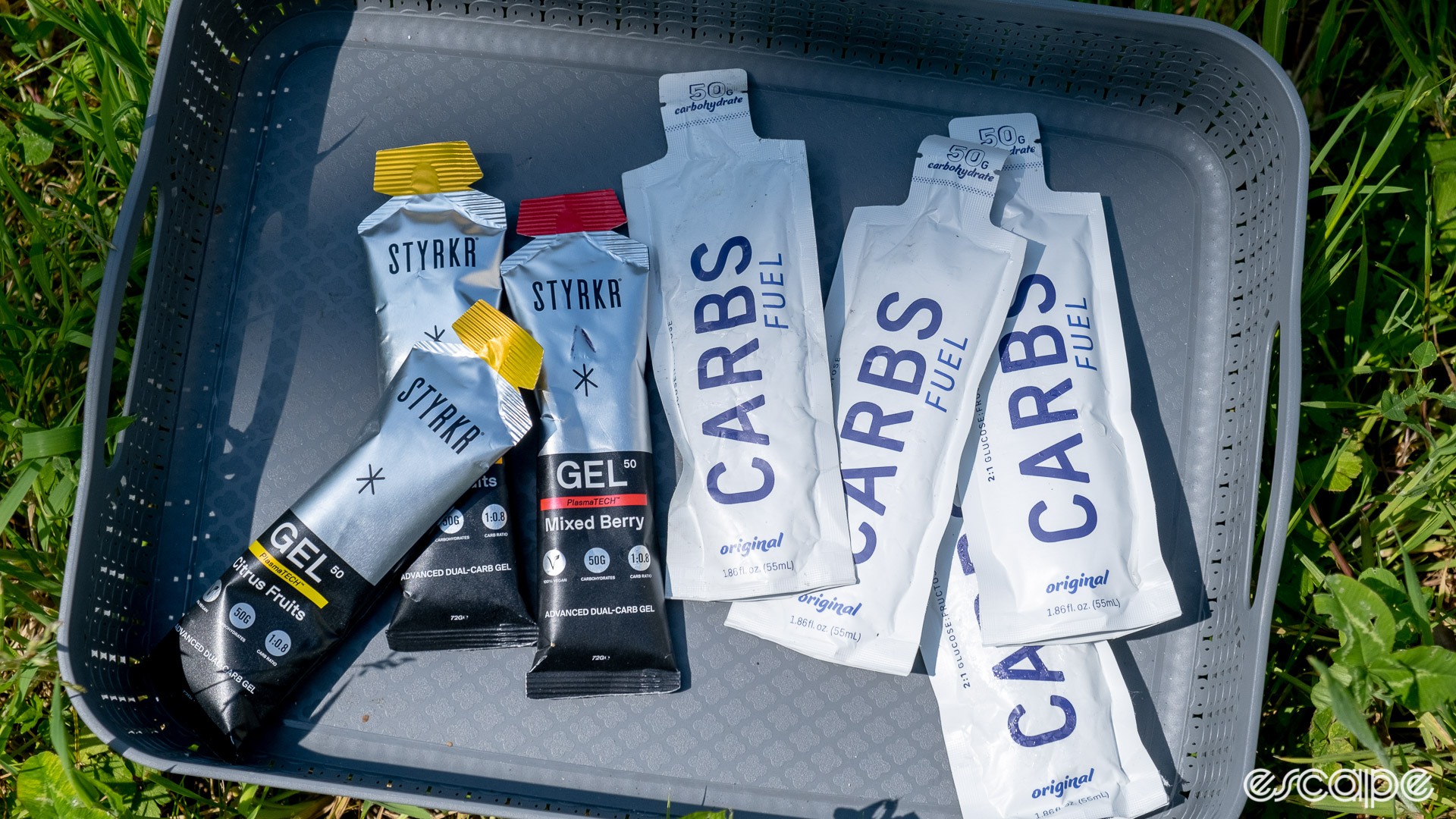
CarbsFuel: Despite the recent buzz and headlines, fuelling has always been a key performance enabler or inhibitor as discussed on an early episode of Performance Process. Despite all this increased understanding, though, a few major challenges remain, namely carrying and consuming enough carbs without overloading the stomach, pocket, or credit card.
That's where CarbsFuel hopes it can help. A new American nutrition provider, CarbsFuel gels contain 50 grams of carbohydrates per serving and at US$2 per serving are roughly half the price of some high-carb alternatives.
Better yet, in CarbsFuel's words, the gels contain no preservatives, no gelling agents, no added flavours.
I've been using CarbsFuel gels for a few months now and the most notable thing I can comment on the gels is that there is so little to comment... and that's a very good thing. The neutral flavour makes them easier to keep consuming gel after gel, the high carb content means I can reduce the contents of my pockets, and the price is much easier to stomach.
The only negative I could point to is the gel packaging. The extra wide pack does limit how much you can use your teeth to drain the gel quickly and one-handed the way I tend to most often consume gels. Basically this comes to down to the horizontal (versus vertical used by most) fill technique CarbsFuel's manufacturing machines uses to fill the packaging. CarbsFuel was aware of this but 1) claim there isn't a single vertical-fill machine in the US, and 2) manufacturing in Europe wasn't an option. And so it made the gel a thinner consistency to mitigate the flow issues and has updated, easier- and wider-opening packaging coming soon.
CarbsFuels 2:1 glucose to fructose ratio in its gels might also be point for concern, with such a high ratio thought to lead to stomach discomfort and gastric issues. I havn't experienced this myself in using CarbsFuel, but that could be a different story six gels into a race. As listeners to Geek Warning will know, I found out the difficult way why SIS Beta Fuel Nootropics gels are strictly one serving per day.
CarbsFuel recognises current research suggests a 1:0.8 ratio as optimal but stuck with 2:1 in the belief 1) some athletes have greater fructose sensitivity compared to glucose and so 2:1 should be suitable to a wider athlete group and 2) it sees palatability and sensitivities to ingredients like preservatives and gelling agents to be as key as the exact makeup ratio. CarbsFuel claims if something is too sweet it's as tough to stomach as if the ratio is not scientifically optimal.
Regardless, under fuelling is still the issue I (and the overwhelming majority of athletes, according to CarbsFuel) most often run into, rather than consuming too much glucose.
Styrkr: CarbsFuel are not alone in offering a new gel containing 50 grams of carbs, though. UK brand Styrkr (stir-kuh), meaning strength in Old Norse, recently unveiled their Gel50 dual carb with "PlasmaTech" designed to offer more carbs in a standard gel packet.
The gel offers that 50-gram carb hit in a 1:0.8 maltodextrin to fructose rate which should alleviate any stomach concerns, natural flavourings, and is 100% vegan. It's not quite preservative-free (it contains potassium sorbate) but does have just just six ingredients, one of which is water.
Unfortunately for some, it does come with a "may contain traces of nuts" warning in minuscule text which also doesn't specify which nuts .... specific nut allergies are not all the same.
Finally, the Gel50 is available in either Mixed Berry or Citrus Fruits flavours, tasty but definitely sweet in my opinion, priced at £30 for a box of 12, which at £2.50 per gel is about 50% (exchange rate and taxes caveats applied) more than the CarbsFuel offering above.
And finally ... This week's podcast
Reminder - Performance Process is an Escape Collective members podcast. That means if you are not yet a member you can enjoy this free sample of this week's episode. To get the full episode and access to all the other Escape content head here to join today.
Until next time …
That’s all folks! All that's left to say is thank you for getting this far into my first newsletter, listening to Performance Process and an extra thanks to all of you who have signed up already as Escape Collective members.
Sign up here to get future editions of this newsletter and others from the Escape Collective network straight into your email inbox.
Until next time ... Trust the process.
Did we do a good job with this story?



